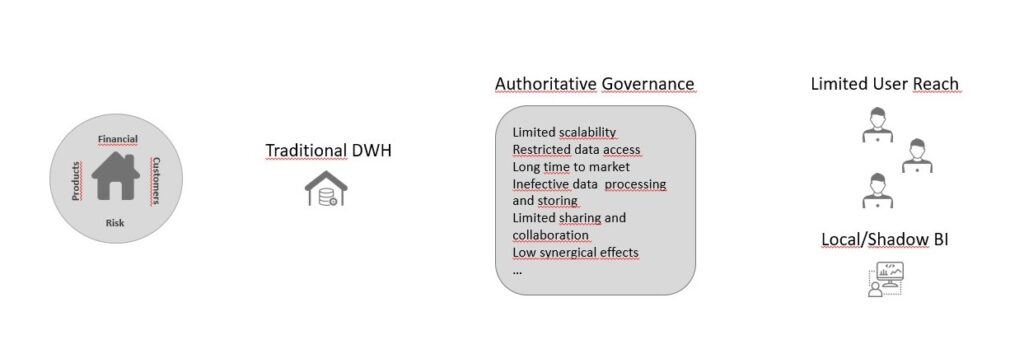Information economy — data as a key asset
Information has turned to be on of the most significant assets of modern businesses. It represents a new way that organizations can create value for not only for their customers.
- Data driven concept goes hand in hand with digital transformations
- Data-driven strategies are now competitive imperative in a lot of industries
- Data-driven decisions shall support business objectives
Most organizations have become aware of the data revolution that is occurring and the continual pressure to become more data driven. Few, however, have learned how to manage their data as an asset so as to derive the most value from it.
In last few year both have changed — needs as well as opportunities.
There are emerging needs but as well opportunities
User needs are changing. Skilled users are demanding new types/sources/frequency/volume of data with much shorter delivery timelines. New unexperienced users are pushed by companies to work with data and become „data driven“. Everybody talks about self service approach and data driven decisions and insights.
New platforms, tools and technologies evolved and found its position in data world and extended options how to work with data. Big data, AI, Data Science, Low/No code tools, API based solutions, etc.
Data itself has changed as well. Companies now do not work only with data from their internal systems. They work also with data from their close ecosystem — partners, vendors, distribution etc. And they can work as well with fully external data — demographical, weather data, data from registers, social networks etc. Data are now not only structured, but has various forms and formats. Mass of data is almost infinite and originate in real time.
What is happening in many traditional organizations
Traditional BI approach established as a „standard in the world of data“ in last 2–3 decades is coming from different needs, mainly stable and reliable regulatory and management reporting. Maintained by a small team of experts.
This has some downsizes for creative users looking for fresh insights in digitalization era.
Traditional BI is mainly
- monolithical, with centralized approach with strong governance
- working mainly with lower amounts of structured data, modelled in centralized data model
- lowly scalable and flexible
- having high costs and long time to market
- suffering from limited capacities of expert team and lack of skills of majority of users
- focused on descriptive view on data rather then prescriptive
- providing limited collaboration and sharing options
- giving not much space for user creativity
„Data as a product“ approach with Authoritative governance.
Too few people have access to too little data and decentralized siloed shadow BI originates.
This is why traditional BI approach can’t scale to the digital data focused era.
Something needs to change, but what?
Data Driven Company needs to democratize data
If you want to become a Data driven company in digital era (and you unfortunately are not a start up built on such principle), you need to democratize data. Data leaders cannot master the opportunities and challenges of digital transformation with yesterday’s centralized roles and organizations, as this creates data bottlenecks and misalignment. Data is a team sport that spans across functions and lines of business.
Data Driven Company needs to give „wings“ to users
- Quick and transparent approach to any source/type of data around in desired frequency
- Self service approach, data catalogues and boutiques of available data sets and services
- Fast integration of new data sources from all around
- Personal scalable workspace/sandbox and easy to use data analytics tools
- Means to curate, share and collaborate on data
On the other hand not to turn into data anarchy, company still needs to maintain „roots“ to utilize data effectively
-
- Clearly articulated strategy regarding data assets with clear goals
- Good semantic models and well maintained Metadata
- Organized data with sufficient quality
- Balanced data governance principles, declarative definitions
- Clear compliance and security rules
- Effective data architecture and platforms
- Trainings and mentoring of users
Gartner MQ for BI and Analytics Platforms, 2017:
“By 2020, organizations that offer users access to a curated catalog of internal and external data will realize twice the business value from analytics investments than those that do not.”
Its nice to say, but where to start?
Red Tie provides DDC-CMM Framework as a structured and measurable methodology to create & mature Data-Driven Company.

